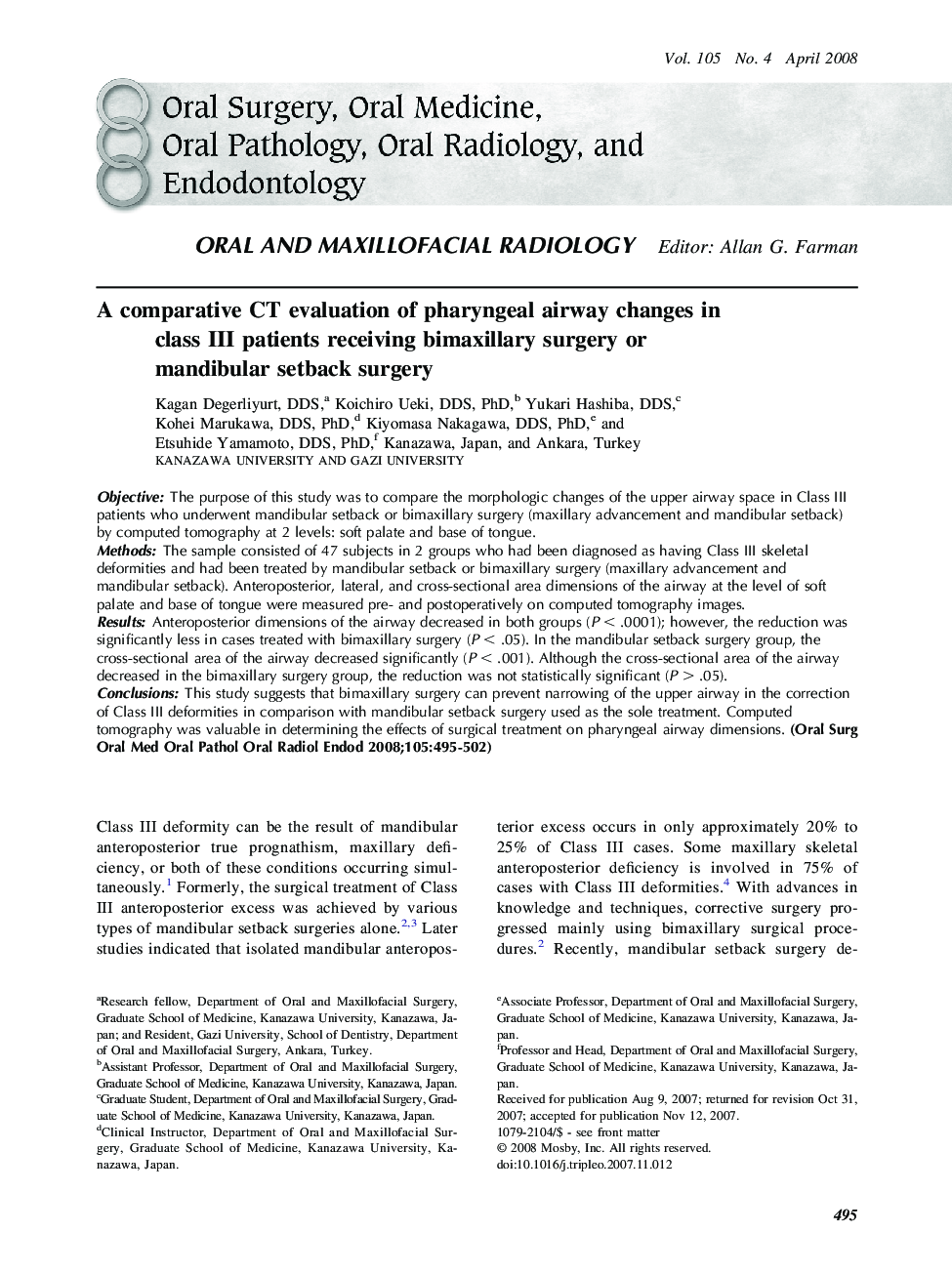| Article ID | Journal | Published Year | Pages | File Type |
|---|---|---|---|---|
| 3168819 | Oral Surgery, Oral Medicine, Oral Pathology, Oral Radiology, and Endodontology | 2008 | 8 Pages |
ObjectiveThe purpose of this study was to compare the morphologic changes of the upper airway space in Class III patients who underwent mandibular setback or bimaxillary surgery (maxillary advancement and mandibular setback) by computed tomography at 2 levels: soft palate and base of tongue.MethodsThe sample consisted of 47 subjects in 2 groups who had been diagnosed as having Class III skeletal deformities and had been treated by mandibular setback or bimaxillary surgery (maxillary advancement and mandibular setback). Anteroposterior, lateral, and cross-sectional area dimensions of the airway at the level of soft palate and base of tongue were measured pre- and postoperatively on computed tomography images.ResultsAnteroposterior dimensions of the airway decreased in both groups (P < .0001); however, the reduction was significantly less in cases treated with bimaxillary surgery (P < .05). In the mandibular setback surgery group, the cross-sectional area of the airway decreased significantly (P < .001). Although the cross-sectional area of the airway decreased in the bimaxillary surgery group, the reduction was not statistically significant (P > .05).ConclusionsThis study suggests that bimaxillary surgery can prevent narrowing of the upper airway in the correction of Class III deformities in comparison with mandibular setback surgery used as the sole treatment. Computed tomography was valuable in determining the effects of surgical treatment on pharyngeal airway dimensions.
